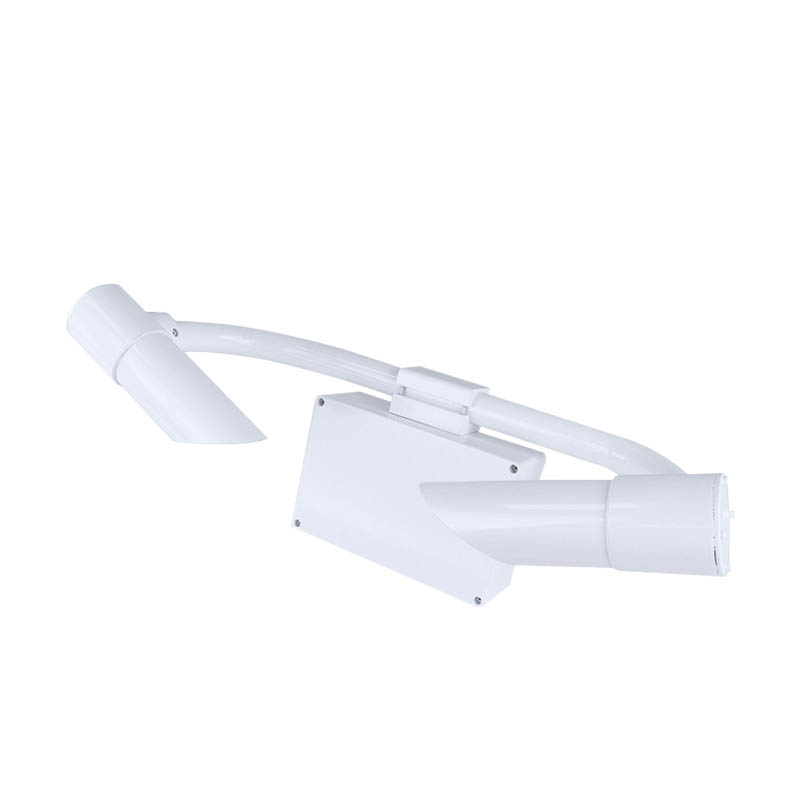Shandong Fengtu IOT Technology Co., Ltd
Sales Manager:Ms. Emily Wang
Cel,Whatsapp,Wechat:+86 15898932201
Email:info@fengtutec.com
Add:No. 155 Optoelectronic Industry Accelerator, Gaoxin District, Weifang, Shandong, China

Sales Manager:Ms. Emily Wang
Cel,Whatsapp,Wechat:+86 15898932201
Email:info@fengtutec.com
Add:No. 155 Optoelectronic Industry Accelerator, Gaoxin District, Weifang, Shandong, China

Model:FT-N2
Brand:fengtu
1.Introduction to Visibility sensor Products
Visibility sensor consists of a transmitter, receiver, and processor. The visibility sensor collects the signal value at the receiving end through the forward scattering principle and calculates the visibility value.The N2 Visibility sensor uses forward scattering method to measure the total extinction coefficient of the air, and then calculates the current visibility, which is widely used in road traffic, meteorological and other industries.
2.Technical features of Visibility sensor
1.The instrument shell is high-quality aluminum material, and is sprayed after anodization.The whole machine has excellent waterproof, dustproof and collision-proof performance;
2.The instrument transmitting and receiving lenses are designed downward to greatly reduce interference from sunlight and other miscellaneous light;
3.Weather phenomenon identification can be identified, such as fog, rain, snow, mixed precipitation, sunny weather, and other weather phenomena, with a high recognition rate;
4.Built-in watchdog circuit to ensure reliable and stable outdoor operation for a long time;
5.The instrument communication and power interfaces both contain lightning protection designs, which greatly reduce lightning strikes and static damage;
6.12~24V wide voltage power supply, total power is about 1W, and the power consumption is extremely low.It can be powered by solar panels, batteries, etc.for a long time;
7.The digital interface uses RS485 or RS232, the standard MODBUS protocol, and there is no need for protocol adaptation;
8.The instrument can output 15s, 1min, and 10min visibility values, and can be read directly without configuration, making it more flexible to use.
3.Visibility sensor implementation standards
QX/T 536-2020 Forward scattering visibility meter test method
4.Visibility sensor Technical Indicators
| Main parameters | Parameter range | Resolution | error |
| Range | 2km | 1m | ≤2km ±2%2km~10km ±5%>10km ±10% |
| Repeatability | ≤4% | ||
| Weather phenomena | Fog, rain, snow, mixed precipitation, sunny | ||
| Weather phenomenon recognition rate | ≥95% | ||
| Operating temperature | -40~60℃ | ||
| Working humidity | 0~100%RH | ||
| Working power supply | 12~24V | ||
| Power consumption | 1W | ||
| size | 610x230x360mm (Length x Width x Height) | ||
| weight | ≤10kg | ||
5.Visibility sensor installation instructions
1.Installation location
The installation location of the visibility meter needs to be selected on an open, flat, unobstructed ground, away from buildings, trees, shrubs, peaks and other objects.This ensures that the instrument's observation range is not blocked and the data is more accurate.
Unnecessary optical interference should be avoided.The receiver of the visibility meter should be installed to a strong light source (such as sunlight), and the transmitter and receiver should be located in the north-south direction.
2.Installation height
The installation height of the visibility meter should be greater than 1.5m and less than 3m.The installation height exceeds 3m, the corresponding height should be calibrated.
3.Installation steps
3.1 Before installation, users should prepare columns and install them on the columns using the clamps provided by the instrument.
3.2 Lift the instrument to a suitable position, use the bolts after the clamp to install and fix the visibility instrument.During installation, ensure that the receiver and transmitter openings are downward, otherwise they should be reinstalled.
best weather stations for home can be used to monitor air temperature, humidity, atmospheric pressure, wind speed, wind direction....
IV testers can inspect the performance of photovoltaic power generation systems. For example, Fengtu's Portable IV Curve Tester can accurately detect many performance indicators in photovoltaic power generation systems:Open Circuit Voltage (Voc)This is one of the important parameters that an IV...
Wind speed and direction measuring devices were probably one of the first types of sensors to be developed in history. Since ancient times, knowing the speed and direction of the wind has been of great importance in many fields such as agriculture, navigation, and construction. This article will loo...
The operation of highways is significantly affected by meteorological conditions, and inclement weather such as fog, snowstorms, typhoons and heavy rains can pose a greater threat to driving safety. Under these conditions, the passage of highways may be obstructed or even closed, seriously affecting...